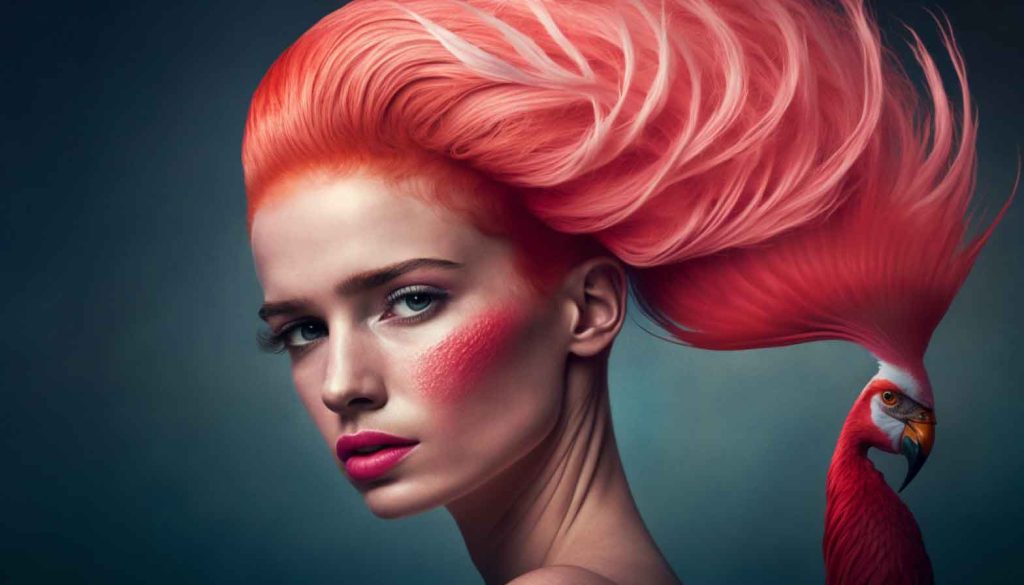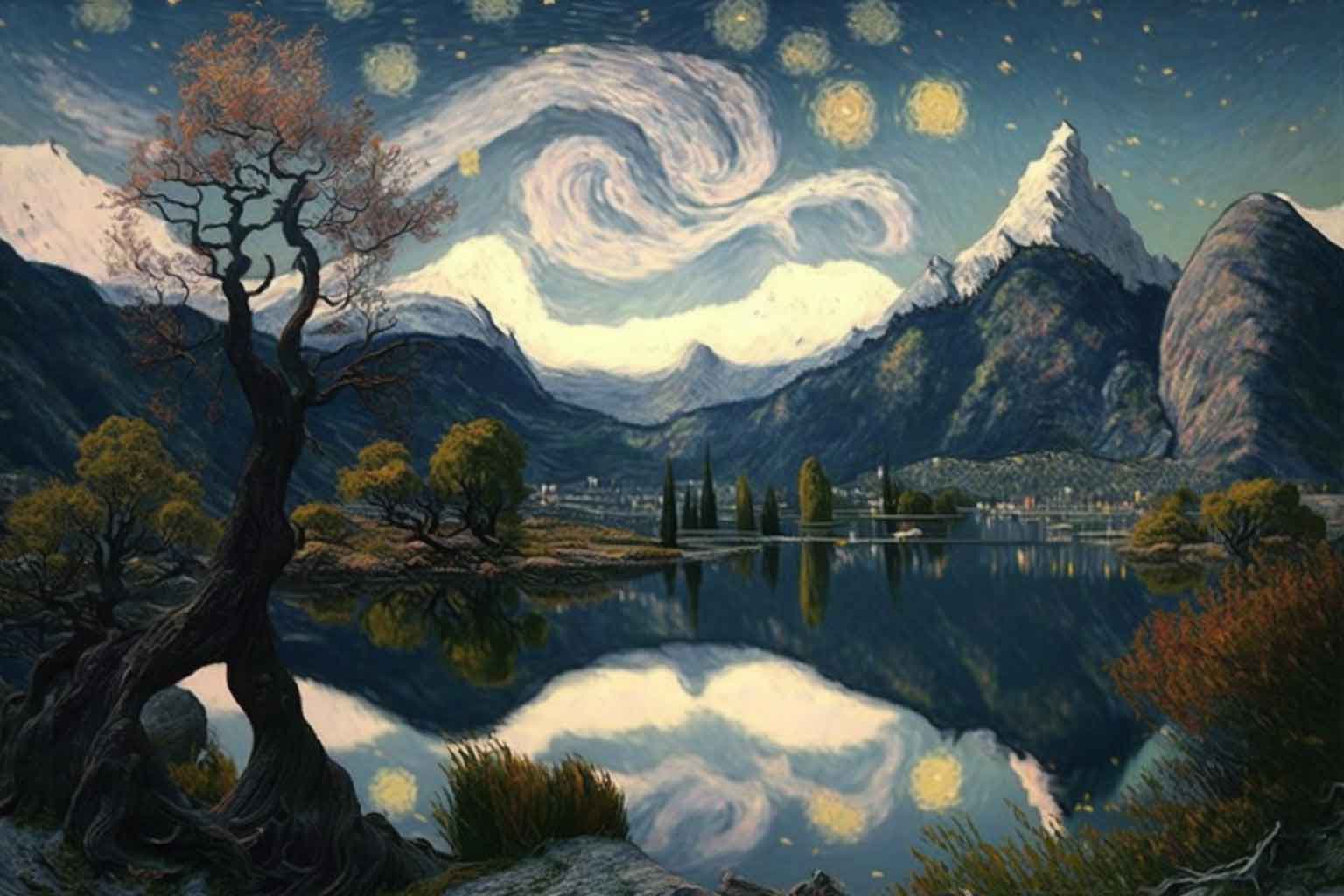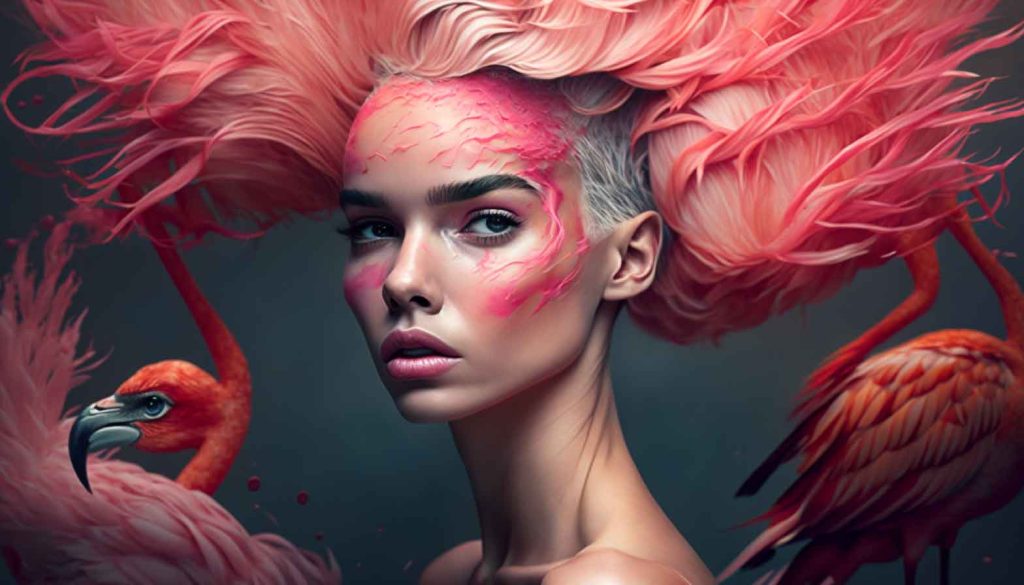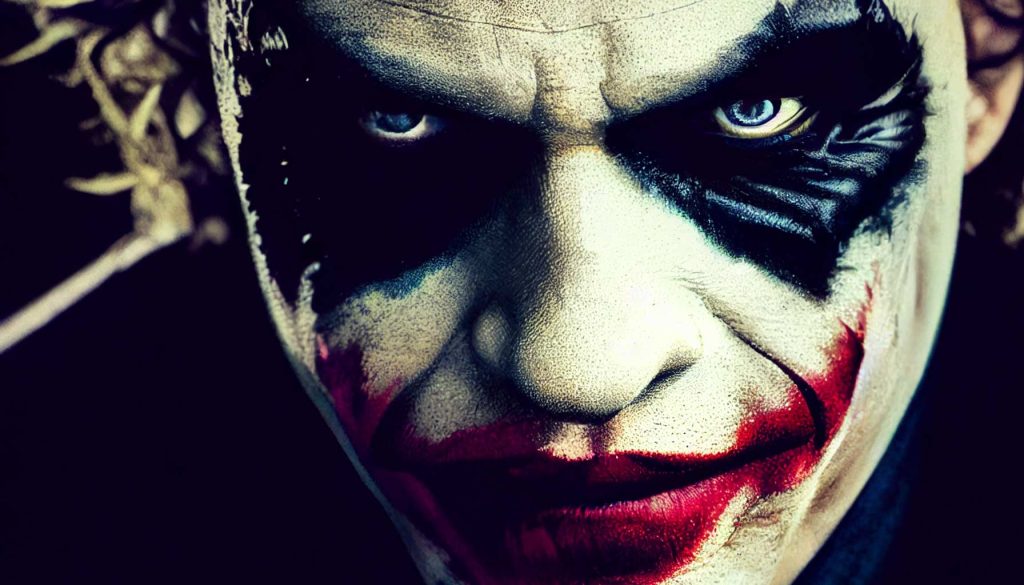How to use AI to create Art?
In this article, I’ll give you a brief overview of how to use AI to create art. With today’s new AI algorithms, a digital painting can be generated within minutes. The result is AI generated pixel art.
Popular Method of using AI to Create Art
Art created using artificial intelligence (AI) is becoming increasingly popular. And even as an Unreal Engine Artist, it’s unavoidable to go with the flow. Especially for Concept Art, AI-generated images can be used as a source of inspiration for 3D World Creation.
Let’s dive a little bit deeper into Computer Science. And what AI image generators and models are most commonly used.
AI art is generated using algorithms and machine learning techniques that allow computers to generate images and animations based on certain inputs or parameters. There are various ways in which AI can be used to create art, including style transfer, generative adversarial networks (GANs), and evolutionary algorithms.

Style Transfer
One popular method of using AI to create art is style transfer, in which an AI model is trained to apply the style of one image to the content of another image. This can result in images that look like they were painted in the style of a famous artist.
generative adversarial networks (GANs)
Another popular method of using AI to create art is with generative adversarial networks (GANs), which involve two neural networks: a generator that creates images, and a discriminator that evaluates the generated images to determine whether they are similar to real images. Over time, the generator improves its output based on feedback from the discriminator, eventually producing images that are difficult to distinguish from real images.
Evolutionary algorithms
Evolutionary algorithms are another approach to creating art with AI. These algorithms work by generating a large number of variations of a design, then selecting the best variations based on certain criteria, such as color or overall appearance. This process is repeated many times, with each iteration resulting in a more refined design.
Despite the growing popularity of AI-generated art, it is important to note that it is not a replacement for human artists. AI art can be seen as an interesting way of exploring new forms of creativity, but it still lacks the emotional and personal touch that is the hallmark of human-created art.
One example of AI generated art using Style Transfer
One example of AI generated art using style transfer is the use of neural networks to apply the style of a reference image to another input image. The neural network takes the reference image and the input image as input, and it then adjusts the pixel values of the input image to match the style of the reference image. The result is a new image that has the content of the input image and the style of the reference image.
For example, you could take a photo of a landscape and apply the style of a famous painting to it, such as Van Gogh’s “Starry Night”. The result would be a new image that has the same subject matter as the original photo but with the distinctive brushstrokes and color palette of “Starry Night”.


This is just one example of the many things that can be done with AI in the field of art and image generation.
One example of AI generated art using generative adversarial networks (GANs)
An example of AI generated art using Generative Adversarial Networks (GANs) is the creation of unique and original images or videos. GANs are composed of two neural networks: a generator and a discriminator. The generator creates new images or videos, while the discriminator evaluates them and provides feedback to the generator. This feedback allows the generator to continuously improve its output until the discriminator can no longer distinguish between the AI generated art and real images or videos.
One popular example of AI generated art using GANs is Deep Dream, which involves generating trippy and surreal images by modifying existing photos or videos. Another example is the creation of faces of people who do not exist, commonly known as “deepfake” portraits. These examples demonstrate the impressive capabilities of GANs and the potential for AI to create new and innovative forms of art.
Generative adversarial networks (GANs) are a type of deep learning architecture that consists of two neural networks: a generator and a discriminator. The generator creates fake data, while the discriminator tries to distinguish between fake data and real data. The two networks are trained together in a competitive process, with the goal of the generator creating data that is indistinguishable from the real data.
Here’s an example of code for a simple GAN in Python using the TensorFlow library:
import tensorflow as tf
# Create the generator network
model_gen = tf.keras.Sequential()
model_gen.add(tf.keras.layers.Dense(256, input_shape=(100,)))
model_gen.add(tf.keras.layers.LeakyReLU(0.2))
model_gen.add(tf.keras.layers.BatchNormalization(momentum=0.8))
model_gen.add(tf.keras.layers.Dense(512))
model_gen.add(tf.keras.layers.LeakyReLU(0.2))
model_gen.add(tf.keras.layers.BatchNormalization(momentum=0.8))
model_gen.add(tf.keras.layers.Dense(1024))
model_gen.add(tf.keras.layers.LeakyReLU(0.2))
model_gen.add(tf.keras.layers.BatchNormalization(momentum=0.8))
model_gen.add(tf.keras.layers.Dense(784, activation='tanh'))
# Create the discriminator network
model_dis = tf.keras.Sequential()
model_dis.add(tf.keras.layers.Dense(512, input_shape=(784,)))
model_dis.add(tf.keras.layers.LeakyReLU(0.2))
model_dis.add(tf.keras.layers.Dense(256))
model_dis.add(tf.keras.layers.LeakyReLU(0.2))
model_dis.add(tf.keras.layers.Dense(1, activation='sigmoid'))
# Compile the discriminator network
model_dis.compile(optimizer=tf.keras.optimizers.Adam(lr=0.0002, beta_1=0.5), loss='binary_crossentropy', metrics=['accuracy'])
# Create the GAN by combining the generator and discriminator
gan_input = tf.keras.Input(shape=(100,))
gen_output = model_gen(gan_input)
gan_output = model_dis(gen_output)
model_gan = tf.keras.Model(inputs=gan_input, outputs=gan_output)
# Compile the GAN
model_gan.compile(optimizer=tf.keras.optimizers.Adam(lr=0.0002, beta_1=0.5), loss='binary_crossentropy')
# Train the GAN
for epoch in range(100):
# Generate a batch of
an example of AI generated Art using evolutionary algorithms
Evolutionary algorithms are a class of algorithms used in computer science and artificial intelligence to simulate the process of natural evolution in order to generate new solutions to problems. In the context of art, evolutionary algorithms can be used to generate images, animations, or other forms of digital media.
One example of using evolutionary algorithms to generate art is to define a function that measures the quality of an image based on certain criteria, such as color balance, symmetry, or complexity. The algorithm then generates a large number of randomly generated images and iteratively improves them over time by applying a genetic algorithm, where the images are mutated, combined, and selected based on their fitness.
Over time, the images generated by the evolutionary algorithm will become more and more complex and visually appealing, as they evolve to better fit the criteria defined by the fitness function. This can result in truly unique and original forms of AI-generated art, with characteristics and patterns that may not have been anticipated or designed by the creator of the algorithm.
Here’s a simple example of an evolutionary algorithm in Python:
import random
def fitness_function(individual):
# This function evaluates the fitness of the individual
# It returns a value that represents how well the individual performs
return sum(individual)
def generate_population(size):
# This function generates a population of individuals
population = []
for i in range(size):
individual = [random.randint(0, 1) for j in range(10)]
population.append(individual)
return population
def mutate(individual):
# This function mutates an individual by randomly flipping one of its bits
i = random.randint(0, len(individual) - 1)
individual[i] = 1 - individual[i]
return individual
def breed(parent1, parent2):
# This function breeds two individuals by combining their bits
child = []
for i in range(len(parent1)):
if random.randint(0, 1) == 0:
child.append(parent1[i])
else:
child.append(parent2[i])
return child
def run_evolution(fitness_function, generate_population, mutate, breed):
# This function runs the evolution by creating a population, evaluating its fitness,
# breeding the fittest individuals, and mutating the offspring
population = generate_population(100)
for i in range(100):
fitnesses = [fitness_function(individual) for individual in population]
population = [population[i] for i in range(len(population)) if fitnesses[i] >= max(fitnesses) - 1]
offspring = []
for i in range(len(population) // 2):
parent1 = population[i]
parent2 = population[len(population) - i - 1]
offspring.append(breed(parent1, parent2))
offspring.append(breed(parent2, parent1))
population += [mutate(individual) for individual in offspring]
return population[0]
best_individual = run_evolution(fitness_function, generate_population, mutate, breed)
print(best_individual)
Most Popular AI Art Generators
- Midjourney : Midjourney is an independent research lab that produces an artificial intelligence program under the same name that creates images from textual descriptions
- Stable Difusion: Stable Diffusion is a latent text-to-image diffusion model capable of generating photo-realistic images given any text input, cultivates autonomous freedom to produce incredible imagery, empowers billions of people to create stunning art within seconds
- RunwayML: A platform that provides a suite of pre-trained AI models that can be used to generate a variety of art styles, from abstract to realistic.
- Deep Dream Generator: A web-based tool that allows you to generate images using deep learning algorithms.
- Artbreeder: An online platform that uses genetic algorithms to generate new art based on existing styles and images.
- DALL·E 2: An AI model developed by OpenAI that can generate a wide range of images, including abstract and surreal art.
- AI Portraits: A website that uses AI to generate portraits in the style of famous artists such as Van Gogh and Picasso.
- PaintsChainer: An AI-powered tool that can generate digital paintings in a variety of styles


